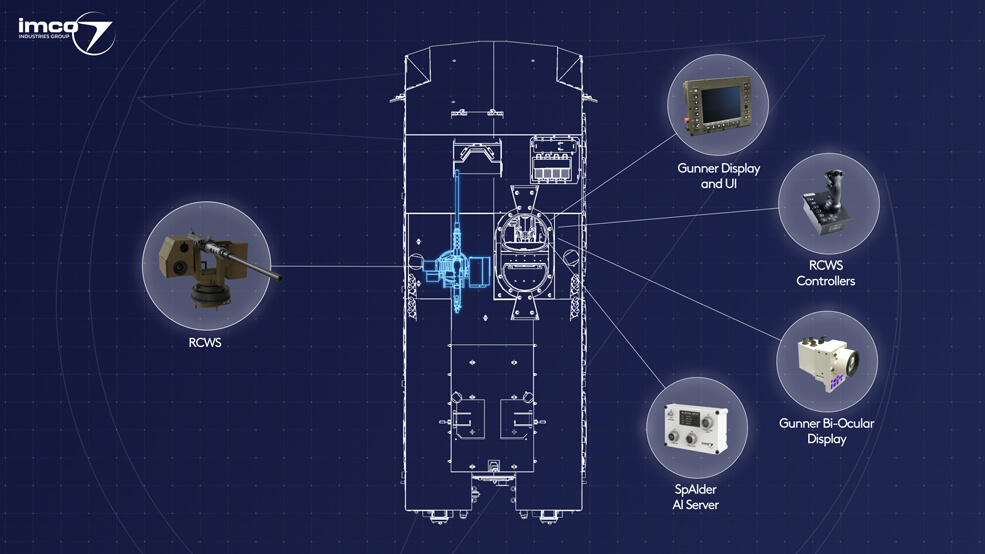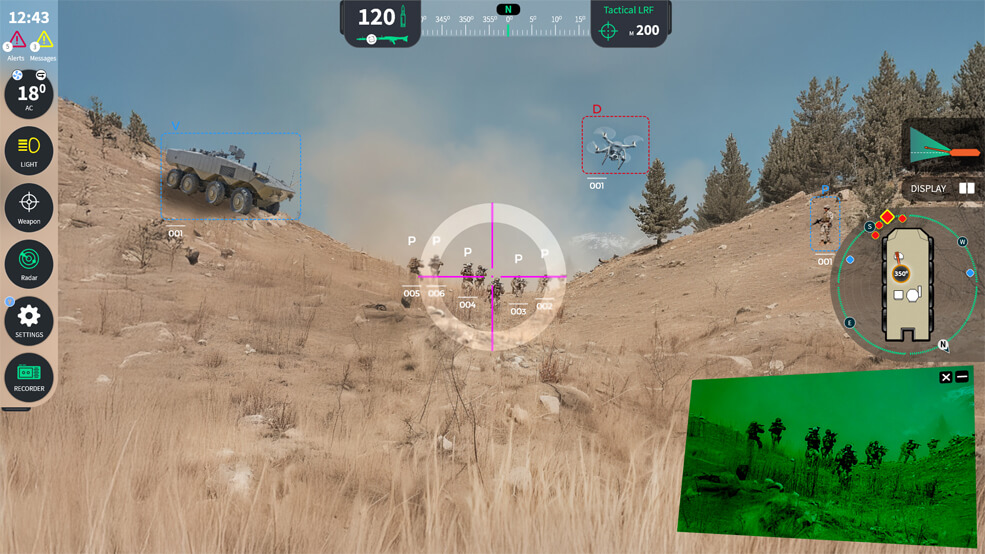Optimizing RCWS Performance: The Critical Role of Integrated Infrastructure

Watch Video

Watch Video
Intro
Modern Remote Controlled Weapon Systems (RCWS) operate in complex, data-rich environments, demanding far more than basic remote operation. Their effectiveness hinges on advanced underlying infrastructure. This infrastructure acts as the system’s central nervous system, crucial for integrating the weapon station with its host platform, sensors, power sources, and wider command-and-control networks. It must efficiently manage and process large volumes of data from electro-optics, targeting systems, and platform diagnostics, presenting crucial information clearly to the operator for rapid, informed decisions under pressure.
The Critical Role of High-Quality Harnessing
High-quality, military-grade harnessing is essential for the reliable operation of Remote Controlled Weapon Stations (RCWS) in harsh environments. The harnessing forms the physical network within the RCWS and connects it to the vehicle, carrying power, video feeds, control signals, and sensor data. Purpose-built cabling with shielding, durable jacketing, and sealed connectors prevents signal corruption, data loss, and power issues, ensuring consistent performance and mission success.
The Requirement for High-Speed, Low-Latency Communication
In modern combat, reaction time is critical. For an RCWS, this necessitates a communication infrastructure delivering high-speed data transfer with minimal latency. Delay between operator commands (like joystick movement or trigger activation) and the system’s physical response, or lag in receiving sensor imagery, can critically impair performance. Milliseconds matter when engaging moving targets, operating effectively while the platform is in motion, or ensuring precise fire control to avoid collateral damage.
How Artificial Intelligence Enhances Weapon Station Operation via Infrastructure
AI capabilities embedded in RCWS infrastructure significantly enhance operator effectiveness. AI algorithms can rapidly process sensor data, enabling automated threat detection and classification. AI also improves target tracking and optimizes firing solutions by calculating complex ballistics in real time. By automating demanding tasks and providing decision support, AI reduces operator cognitive load and accelerates engagement timelines.
IMCO Group's Infrastructure Solutions for RCWS Needs
IMCO Group offers flexible solutions for the complex infrastructural demands of modern RCWS. Recognizing the diverse needs of system integrators and end-users, IMCO provides two procurement options.
Customers can purchase individual components, such as the mission computer or military-grade harnessing, on a modular basis. This allows integration of specific high-quality IMCO components into existing systems, providing tailored upgrades or replacements.
Alternatively, IMCO offers comprehensive, pre-integrated RCWS infrastructure kits. These kits bundle essential components, streamlining the integration process and minimizing compatibility risks.
“Modern warfare demands more than just firepower from RCWS systems,” says Ariel Kendal, CEO of IMCO Group. “Our advanced infrastructure solutions provide the high-speed connectivity, data processing, and AI capabilities critical for battlefield success.”

